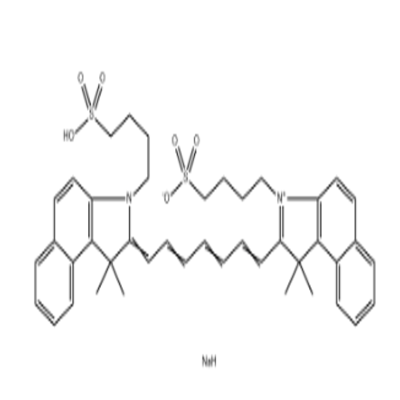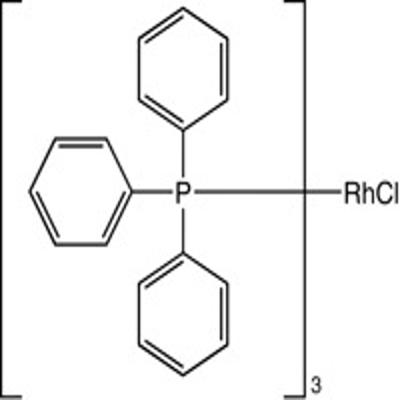-
Categories
-
Pharmaceutical Intermediates
-
Active Pharmaceutical Ingredients
-
Food Additives
- Industrial Coatings
- Agrochemicals
- Dyes and Pigments
- Surfactant
- Flavors and Fragrances
- Chemical Reagents
- Catalyst and Auxiliary
- Natural Products
- Inorganic Chemistry
-
Organic Chemistry
-
Biochemical Engineering
- Analytical Chemistry
- Cosmetic Ingredient
-
Pharmaceutical Intermediates
Promotion
ECHEMI Mall
Wholesale
Weekly Price
Exhibition
News
-
Trade Service
Dust RAS cancer gene mutations are the most common active mutations in human cancer, occurring in 30% of human tumors.
Although one of the earliest cancer genes to be discovered, three decades of effort have failed to identify clinically viable KRAS protein inhibitors for two main reasons: (1) KRAS with Pimol affinity with GDP and GTP Binding seriously hinders efforts to develop competing inhibitors for nucleotides, and (2) the lack of other deep surface hydrophobic pockets of KRAS proteins hinders efforts to find high affinity variant inhibitors.
a major breakthrough in 2013, Shokat et al. reported a new strategy to overcome these challenges, using co-price inhibitors to target the active cysteine of KRASG12C.
structure of the crystal structure of the wild KRAS combined with GDP is shown in figure 3 below, shown on the left.
crystallization studies have shown that a new pocket is formed under the Switch-II region where the effect factor is combined, and it is worth noting that the mutant cys12 is located near the nucleotide pockets and switching areas associated with the interaction of the effect factor (shown in figure 1 on the right below), where fragment screening based on the desulfurization is The library of 480 stranded compounds was screened using complete protein mass spectrometry and fragments 6H05 and 2E07 were obtained, and the reactions of two fragment compounds were not detected with wild type K-RAS containing 3 natural cysteine residues.
Figure 1. Wild KRAS (left) and KRASG12C (right) GDP combined schematics to select the optimal fragment 6H05 for the structure of the relationship study, obtained the highest active chemical (6), binding mode as shown in the figure on the right (see Figure 2 left below), compound 6 does not bind to the nucleotide pocket, but from Cys12 to the adjacent pocket consisting mainly of Switchwitch-II.
this fully formed pocket is not apparent in other published structures of THES, although grooves can be seen in some cases, and previous studies have shown that there are variants in this area.
called the composite binding zone the Switch-II Pocket (S-IIP).
Figure 2. Structured relationship study diagram (left); compound 6 (cyan) combined with GDP (grey) and Ca2 plus (green) cocrystalline structure schematic (right) S-IIP is located in the center of RAS β-folding between alpha 2-(Switch-II) and alpha-3-helix, a clear electron density shows the position of compound 6 inside S-IIP, and confirms the two sulfur bonds between 6 and Cys12 (shown below 3 left).
6 hydrophobic pcobenzene base forms several hydrophobic contacts.
Glu99 and Gly60 to form a direct hydrogen bond to 6 (shown right in Figure 3 below).
switch-II has a significant rearm effect on the formation of S-IIP, and the structure of Switch-I has not changed from the combined state of GDP.
3. The electron cloud density map of compound 6 (left); the surface of S-IIP is represented around the compound, showing the hydrogen bond (yellow line). the
indicates that the residual base and 6 hydrophobic contact (right) Shokat and so on did not continue to use disulide-based compounds, but turned to carbon-based hydroelectrides, acrylamide and vinyl sulfonamide, obtained an efficient acrylamide compounds, where compound 12 is very active, as shown in Figure 6 below.
also proved that compound 12 does not react with the cysteine of wild type KRAS.
multiple cocrystalline structures indicate that the compound follows a similar trajectory through the pocket and projects the hydrodynium into the (o-) and (p-) sub-pockets.
although there are considerable differences in the end benzene rings, these compounds meet similar hydrophobic interactions and support the critical role of this region of S-IIP (as shown in Figure 4 below).
Figure 4. 10 mM compounds form after 24 hours of compound formation (left);
structure analysis also predicts that the functionality of the switching factor SOS may be affected by the combination with S-IIP.
K-RAS (G12C) is treated with compounds 8 or 12 blocking SOS catalytic nucleotide exchange, as described above, these compounds do not impair the EDTA catalytic GDP exchange, as shown in Figure 5 below.
Figure 5. The soS catalytic full-length K-RAS (G12C) nucleotide exchange alone (a), or with 8 (b) or 12 (c) labeled KRASG12C;
the role of compound 12 in a small number of genotypes in the cell line of lung cancer.
As expected, cell lineages containing G12C mutations (H1792, H358, H23 and CALU-1) showed reduced survival and increased apoptosis after treatment compared to groups without G12C mutations (H1437, H1299, and A549), as shown in Figure 6 (left) below.
highly sensitive H1792 cells show low levels of K-RASGTP, consistent with the preferred combination of inhibitors and K-RAS GDP, as shown in Figure 6 (middle) below.
they are highly dependent on K-RAS, as shown in Figure 6 (right).
note that K-RAS-dependent (A549) and non-dependent (H1299) cell strains lacking G12C are insensitive to compound 12.
12 in half of the H1792 cells (EC50) was 0.32±0.01 m.
6. Sensitivity of lung cancer cells to inhibitors, K-RasGTP levels, and dependence on K-Ras.
percentage of survival relative to DMSO treatment 72h (left), Glutathione S-transferase (GST) labeled RBD (C-Raf's RAS binding domain) and lysate incubation assay K-RAS GTP Overall, cell data provided a conceptual validation of genotype-specific use of S-IIP binding complexes in K-RASG12C-driven cancers after transflyction KRAS siRNA 72h evaluated cell survival (right).
Matthew P. Patricelli et al. continued to explore on the basis of compound 12 and found that compound 12 did not exhibit substantial KRASG12C co-binding in NCI-H358 (H358) cells containing KRASG12C mutations, even after 6 hours of treatment of 100 mol/L compounds did not show significant KRAS co-binding.
In order to address the possible causes of the lack of cell activity in compound 12, more effective Switch II pocket inhibitors were designed for co-priced KRASG12C target reagents based on iterative structures, and their activity in purified recombinant KRASG12C and their ability to bind to KRAS G12C in cells was tested.
ARS-853 gives great hope, as shown in Figure 7 below.
7. In biobiotic assays, the binding rate constant between ARS-853 and KRASG12C was 76M-1s-1, more than 600 times higher than compound 12, and cell binding IC50 was 1.6 μmol/L in 6 hours.
in the presence of GDP, the high-resolution crystal structure of the combination KRASG12C identifies the binding bit point of the ARS-853 as the switch II pocket described earlier.
structure, the ARS853 co-price is connected to the C12 and extends to the Switch II pocket area located at the center of KRAS β-folding and between the alpha2 and alpha3 spirals.
the structure of other published switch II binding compounds, ARS853 induces the rotation of the alpha2 helix, accompanied by the displacement of M72, to accommodate the lids in different hydrophobic pockets.
this hydrophobic pocket is occupied by the aromatic ring of the ARS-853, chlorine and methyl cyclopropyl substitute base provide close Van der Wythenenol contact, and phenol hydroxyl and D69 form a hydrogen bond.
ARS-853 acrylamide is associated with a hydrogen bond formed by a conservative K16 and a water molecule in the usual magnesium ion mating, while occupying a position similar to the end phosphoric acid in the GTP binding form of KRAS.
, several characteristics of the structure indicate that the KRASG12C combined with ARS-853 represents the inactive state of KRAS.
as shown in Figure 8 below.
Figure 8. The crystal structure of the ARS-853, which binds to KRASG12C in combination with KRASG12C, highlights the key hydrogen bonds and hydrophobic interactions in switch II pockets (right) Matthew R. Janes et al. further experimentally showed that ARS-853 inhibits the function of KRASG12C cancer protein in cells, ARS-853 cells are involved in the rapid circulation of nucleotides on KRAS G12C cancer protein, kraS G12C GTP level is regulated by upstream signaling factors.
Despite these breakthroughs, revealing previously unknown RAS-combined pockets, and the researchers conducted a number of screening experiments, they led to only limited evidence and a serious lack of evidence of a convincing in vivo response to the mechanism of targeting.
structure-based drug designs, such as Matthew R. Janes, continue to improve the ability and drug-like properties of mutation-oriented and KRAS-specific inhibitors.
study found that the main disadvantages of the ARS-853 series of compounds were short plasma metabolic stability (t1/2-lt;20min) and poor oral bioutability in mice (F-lt;2%), which prevented it from being used for further in vivo studies.
structural activity relationship also limits further improvements in the ARS-853 series.
the focus is shifted to different brackets in the design structure, which properly locate acrylamide's composition and trajectory and allow the optimal hydrophobic binding part to be placed appropriately in the S-IIP.
We assume that the ARS-853 series of flexible 2-amino-1-(π-phenyl-1-base) ethane-1-ketone connectors can be shortened and replaced by more rigid double-ring brackets and be suitable for the idle area between S-II and A3 helixes reassessed by the previously reported ARS-853 cocrystalline structure.
extensive stent optimization, we determined that the quinine core is a versatile stent that overcomes the SARS limitations of ARS-853 and has better drug-like properties.
is shown in Figure 9 below.
Figure 9. This advance in the study of the structure optimization of the bracket of ARS-853 has led to a series based on pyrethroids and, after systematic optimization of the replacement base around the bracket, to a significant improvement in good ADME/PK and KRAS co-price binding activity, as shown in Figure 10 below.
10. The compositional study of G12C-TE and the 7-bit and 8-bit substitutural rate constants associated with the quinine nucleus continued to synthesize several compounds with higher activity in the pyridoxone series, most notably the compound ARS-1620, which contains a fluorophenol hydrophobic binding, axial hand, which shows the isomer reactive effect of S-attos on KRAS-12 hexasteine (see figure 11 below).
Figure 11. The cocrystalline structure of the ARS-1620 chemical structure ARS-1620 combined with KRASG12C shows a unique binding pattern and binding from the original S-IIP KRASG12C inhibitor to Cys-12 trajectory, and revealed the obtained additional key interaction with His-95, resulting in a more rigid and favorable co-price reaction composition than the ARS-853 series compounds (shown in Figures 12 and 13 below).
12. The ARS-1620 (gold) and GDP combined with the KRASG12C cocrystalline structure, positioned in switch 1 (blue), switch 2 (pink) and induction switch 2 pocket (S-IIP) area; In the biochloric experiment, the observation rate of ARS-1620 (gold) and ARS-853 (green) combined mode and key interaction was 10 times higher than that of ARS-853, which proved that the modification effect of ARS-1620 on KRAS was significantly improved compared with previous compounds.
the ARS-1620 priority is combined with the GDP status of KRASG12C and lacks detectable reactive response to any residues of wild type (WT)-KRAS protein.
addition, KRAS G12C, which is co-priced with the ARS-1620, lacks the nucleotide exchange capabilities mediated by SOS and EDTA.
also confirmed the inhibitory activity of ARS-1620 at the cellular level, and the selectivity of KRASG12C in Pan-RAS.
risk of co-price inhibitors is the possibility of non-specific reactions with non-target proteins.
there are 200 kinases with reactive cysteine near the ATP pocket, which also extend to non-kinase proteins containing reactive cysteine, which, if targeted, may produce unnecessary specific toxicity.
In order to better define the possible off-target susceptibility and specificity of ARS-1620, unbiased chemical proteomic screening was used to evaluate co-price reaction activity within cells, covering 8501 cysteine in 3,012 annotated proteins







